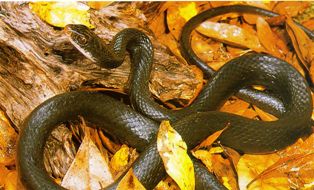Brrr!!!
When I woke up this morning the outdoor thermometer read 37 degrees. This picture was from a few years ago when I awoke to some Florida snow. It certainly wasn't that cold this morning but wasn't typical a Florida temperature for November. With no clouds to be found the day remained cool but that Florida sunshine felt great on the skin and I wasn't the only one who seemed to notice. I opened my back door and saw a black racer sunning in the grass but he didn't stick around long enough for a photo.
Black racers are large, active snakes with smooth, shiny
scales. Adults average 23 to 50 inches in length, while young are about
15 inches long. Racers prefer dry open fields, meadows, forest clearings
and prairies. They are active in the daylight hours and can be
relatively easy to spot in the field because they often forage with
their head and neck raised above their body. Racers often bask in the
sun in low brush and can quickly disappear from view, thus the name
“racer.” They are the only species that will occasionally charge at a
person. This behavior is a bluff and the racer will retreat if
challenged. Racers eat a variety of rodents, insects, amphibians, other
reptiles, birds, and bird eggs.
Our yard is heavy with both live oak and turkey oak trees and every few years our live oaks put out a tremendous amount of acorns. I'm talking needing to wear a hard hat to go in the back yard amount of acorns! Live oak is a large spreading tree of the lower
Coastal Plain from southeastern Virginia to southern Florida. It
normally grows in low sandy soils near the
Coast but also occurs in moist
rich woods and along stream banks. On the Gulf Coast, live oaks often
support many types of epiphytic plants, including Spanish moss.




Comments
Post a Comment